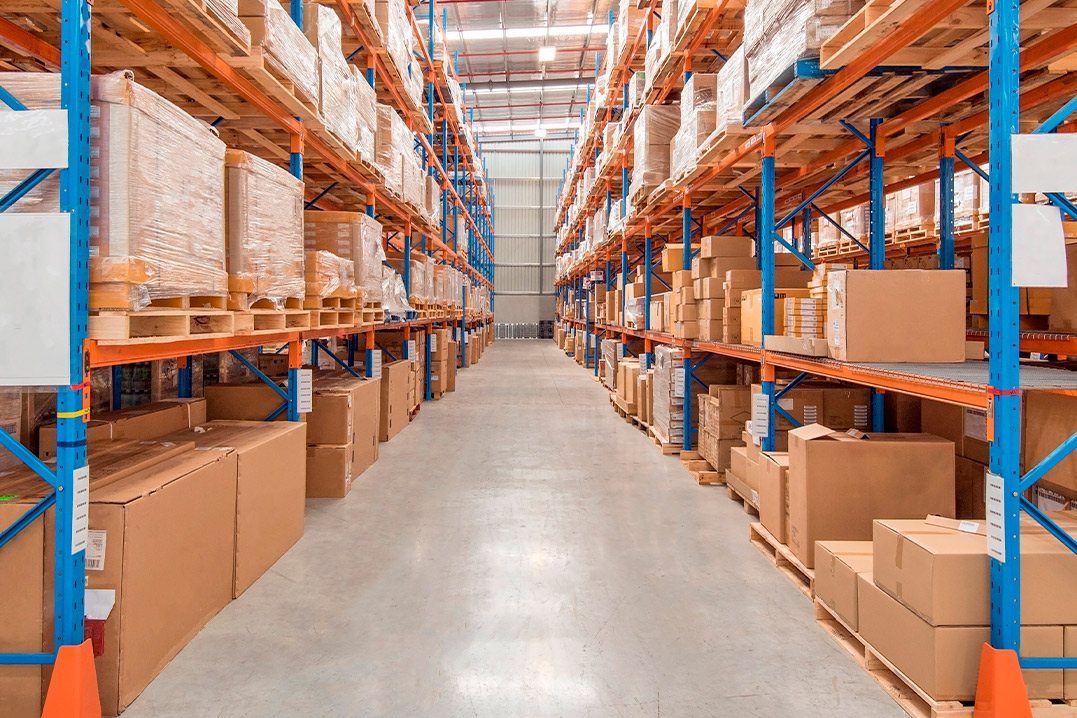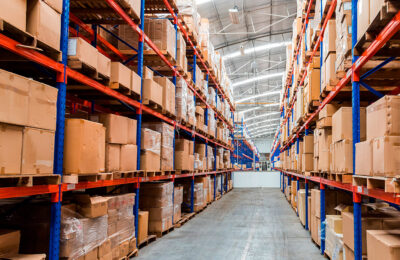Global trade has entered a period of unprecedented volatility. With tariff hikes reaching their highest levels in nearly 90 years, U.S. importers face a perfect storm of financial pressures. The current 145% tariff on Chinese goods and 10% across-the-board tariffs on nearly all nations have created immediate challenges: disrupted cash flow cycles, capital tied up in duties, longer customs clearance times, port congestion, and threatened profit margins.
In response, businesses are increasingly turning to bonded warehousing, a strategic solution that allows importers to store goods without paying duties upfront, improving cash flow while maintaining operational flexibility. The demand for these facilities has surged dramatically, with one logistics network reporting 19 requests for bonded warehouse space in early 2025 compared to just two during the same period in previous years. This heightened interest has pushed prices to three to nine times typical rates as importers scramble to secure space and navigate an increasingly complex trade landscape.
How Bonded Warehousing Works: Deferring Duties and Enhancing Flexibility

Bonded warehouses are secure storage facilities authorized and regulated by U.S. Customs and Border Protection (CBP) where imported goods can be stored without immediately paying customs duties or taxes. These specialized facilities create a strategic buffer zone between international shipping and domestic distribution, effectively keeping imported merchandise in a “not yet imported” status until needed. This process also helps businesses avoid costly demurrage and detention fees by quickly moving goods off congested ports into bonded storage, reducing the risk of shipping delays.
For businesses to operate a bonded warehouse, they must undergo rigorous vetting. Key personnel must complete background checks, and operators must secure a customs bond (typically starting at $100,000) to protect potential government duty revenue.
The bonded warehousing process follows four primary stages:
- Import: Goods arrive in the U.S., and customs officials process documentation without collecting duties
- Storage: Merchandise is securely held under CBP supervision without triggering duty payments
- Processing: Optional value-added services like sorting, repackaging, or relabeling can be performed while maintaining duty-deferred status
- Release: Goods are either entered into U.S. commerce (with duties paid at current rates) or re-exported (avoiding U.S. duties entirely)
Key features include the ability to store goods for up to five years without paying duties, alignment of duty payments with actual sales cycles, and potential duty-free re-export options. This arrangement significantly improves cash flow by eliminating large upfront duty payments and allowing businesses to preserve working capital for core operations rather than tying it up in inventory costs.
Key Cost-Saving Benefits and Real-World Applications
While the operational mechanics of bonded warehousing are important to understand, the financial advantages often represent the most compelling reason businesses choose this strategy. In today’s volatile trade environment, these facilities offer multiple ways to optimize cash flow and reduce import costs.
Key features include the ability to store goods for up to five years without paying duties, alignment of duty payments with actual sales cycles, and potential duty-free re-export options. This arrangement significantly improves cash flow by eliminating large upfront duty payments and allowing businesses to preserve working capital for core operations rather than tying it up in inventory costs.
Just as importantly, bonded warehousing streamlines logistics timelines, freeing importers from port storage restrictions and allowing them to release inventory when transportation capacity is available, helping to bypass peak-season delays.
Financial Advantages of Bonded Warehousing

The primary financial benefit of bonded warehousing is duty deferral, which aligns payment timelines with actual sales cycles. Rather than paying large duty sums upfront, importers can preserve working capital for core business operations. For example, a $100,000 shipment with a 25% tariff would typically require an immediate $25,000 payment upon arrival. With bonded warehousing, this $25,000 remains available for other business needs until products actually enter commerce.
The pay-as-you-go model is particularly valuable during unpredictable market conditions. Businesses can withdraw inventory in smaller batches, paying duties only on those specific goods. This incremental approach means importers can take goods out of bonded warehouses gradually, paying tariffs as they go while keeping the remainder protected from taxation.
For companies with international distribution networks, the re-export benefit creates substantial savings. Goods initially intended for the U.S. market can be redirected to other countries directly from bonded storage without ever incurring U.S. duties. This flexibility allows businesses to respond to shifting global demand or seek more favorable tariff environments.
Within the bonded environment, value-added services offer another layer of cost efficiency. Activities like sorting, inspection, repackaging, relabeling, and even reclassification can be performed without triggering duty payments. This means businesses can ensure compliance, adjust to market requirements, or enhance product presentation while maintaining their duty-deferred status.
When comparing traditional warehousing and bonded warehousing, it’s essential to look beyond just storage costs. The two options differ significantly in how they impact cash flow, duty payments, and flexibility for businesses that import, store, and potentially re-export goods. The table below highlights key differences to help you decide which is best for your operations:
| Feature | Traditional Warehousing | Bonded Warehousing |
| Duty Payment | Immediate payment upon import | Deferred up to 5 years |
| Cash Flow Impact | Large upfront capital commitment | Preserved working capital |
| Re-export Options | Duties already paid, no recovery | No duties if re-exported |
| Processing Flexibility | Limited; may require additional permits | Value-added services without triggering duties |
| Regulatory Oversight | Standard commercial regulations | CBP-supervised with enhanced compliance |
Real-World Applications
These benefits translate into tangible advantages across multiple industries. Electronics importers facing steep tariffs on Chinese goods have increasingly turned to bonded warehousing to weather trade tensions. Rather than absorbing immediate 25% or higher tariffs, they store products in bonded facilities, releasing inventory gradually or waiting for potential tariff reductions. This also gives them the flexibility to time shipments around labor strikes, port slowdowns, or trucker shortages, all common causes of supply chain delays.
Food distributors use bonded warehousing to navigate complex import quotas and seasonal demand fluctuations. By strategically timing the release of goods into domestic commerce, they can optimize market conditions and pricing while maintaining freshness through climate-controlled bonded facilities. This level of control prevents spoilage risks from delayed shipments and ensures products reach shelves at peak quality.
Seasonal retailers represent another success story. By importing holiday merchandise months in advance and storing it in bonded warehouses, these businesses avoid peak-season shipping surcharges while deferring duty payments until closer to the actual selling season. This approach aligns duty payments with revenue cycles, maximizing profitability during critical sales periods.
Choosing the Right Local Bonded Warehousing Partner

While understanding the benefits of bonded warehousing is essential, implementing this strategy requires selecting the right partner with the proper infrastructure, regulatory knowledge, and logistics capabilities. As demand for bonded warehouse space surges, with some facilities reporting up to 60 proposals by April’s end, working with an established provider becomes a top priority.
The qualifications for bonded warehouse operators are stringent. Given that only a small fraction of the roughly 2 billion square feet of industrial property is bonded by U.S. Customs and Border Protection, finding an experienced partner is both crucial and challenging.
Several factors should influence your decision when evaluating potential bonded warehousing partners:
- Strategic Location: Proximity to ports, border crossings, and major transportation routes directly impacts transit times and costs – reducing lead times and minimizing transportation-related delays.
- Regulatory Compliance: 100% U.S. Customs compliance and demonstrated expertise in navigating complex import regulations.
- Flexible Terms: Month-to-month warehousing options that adapt to changing business needs without long-term commitments.
- Technology Integration: Advanced inventory tracking systems and warehouse management technology with real-time visibility to avoid inventory misplacements or release delays.
- Value-Added Services: Capabilities for repackaging, relabeling, and other customs-compliant modifications within the bonded environment.
McAllen Local Expertise

Location is a major factor that can influence cost, speed, and overall supply chain efficiency when selecting a bonded warehouse. Texas stands out as a prime choice for many businesses due to its geographic advantages:
- Strategic Location in Texas: Local bonded warehouses offer unique advantages for both cross-border and domestic distribution.
- Proximity to the U.S – Mexico Border: Ideal for companies with North American supply chains, enabling smooth cross-border operations.
- Access to Key Infrastructure: Provides quick connections to border crossings, Gulf ports, and major highway networks.
- Cost and Speed Benefits: Reduces transportation expenses and accelerates order fulfillment.
Expertise of your warehousing partner can make an equally big impact on your bottom line. Choosing a provider with deep customs knowledge and regulatory experience ensures smoother operations and maximized savings:
- Expert Guidance Matters: Maximizes tariff savings and strengthens supply chain resilience.
- Customs & Duty Insights: Helps with customs procedures and duty minimization strategies.
- Regulatory Compliance Support: Reduces risk through accurate documentation and adherence to rules.
- Specialized Knowledge: Identifies HS code and classification opportunities for hidden savings.
As global trade uncertainties persist, local bonded warehousing offers a strategic approach to controlling costs, avoiding costly port delays, and gaining operational flexibility. By partnering with an established provider offering 40+ years of logistics expertise and demonstrated customs compliance, businesses can transform supply chain vulnerabilities into competitive advantages.
In today’s unpredictable trade environment, this approach isn’t just about logistics; it’s about smarter financial management and sustainable business growth.
Discover the power of bonded warehousing near you with CTC Distributing and transform your import operations. Our U.S. Customs-regulated facilities allow you to store goods without paying immediate duties, giving you the financial flexibility to manage cash flow effectively.
Whether you’re dealing with high tariffs or seeking to optimize your supply chain, our bonded warehouses offer secure, compliant storage solutions tailored to your needs. Benefit from duty deferral, re-export capabilities, and value-added services to stay competitive in a volatile market. Learn more about our bonded warehousing solutions today!





